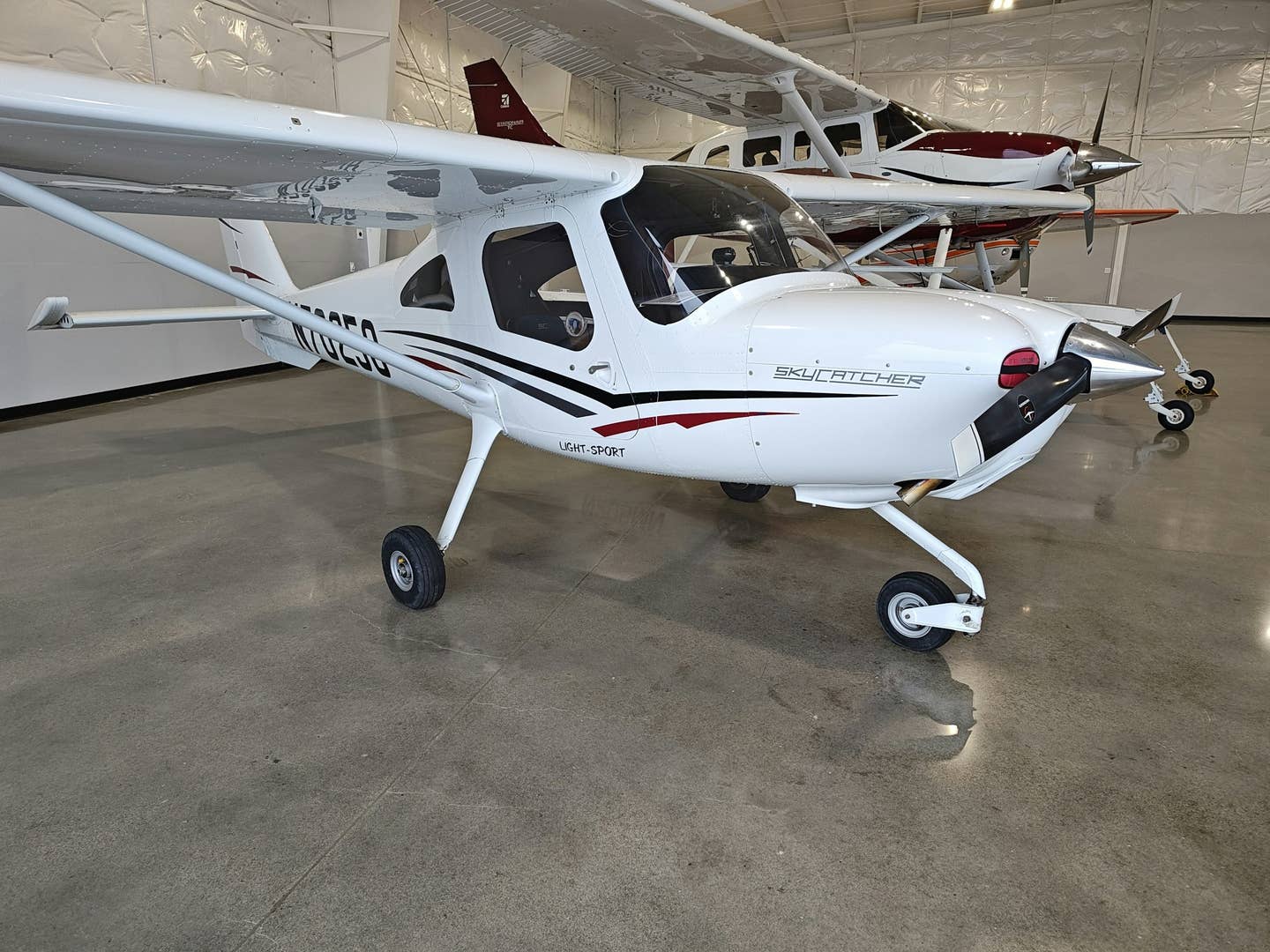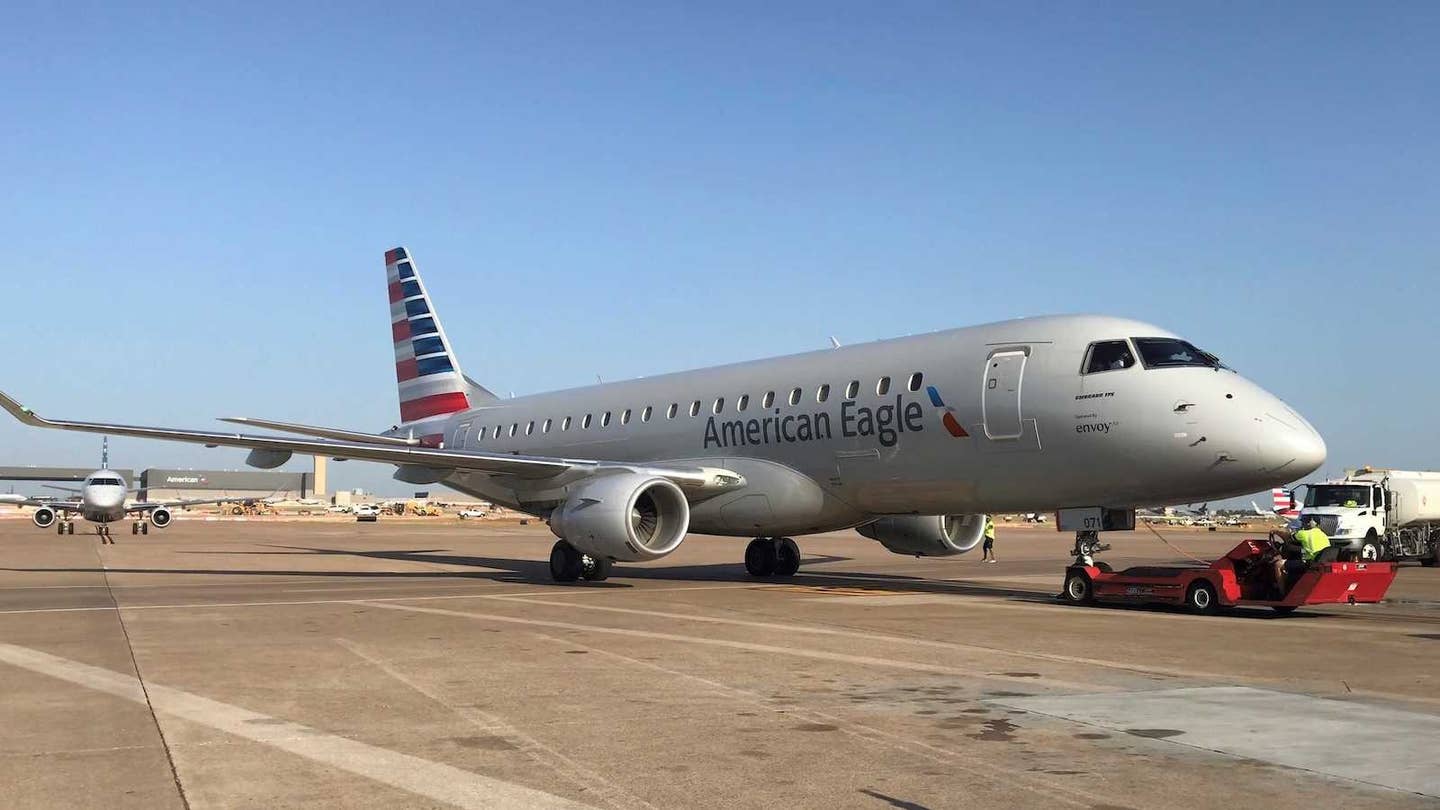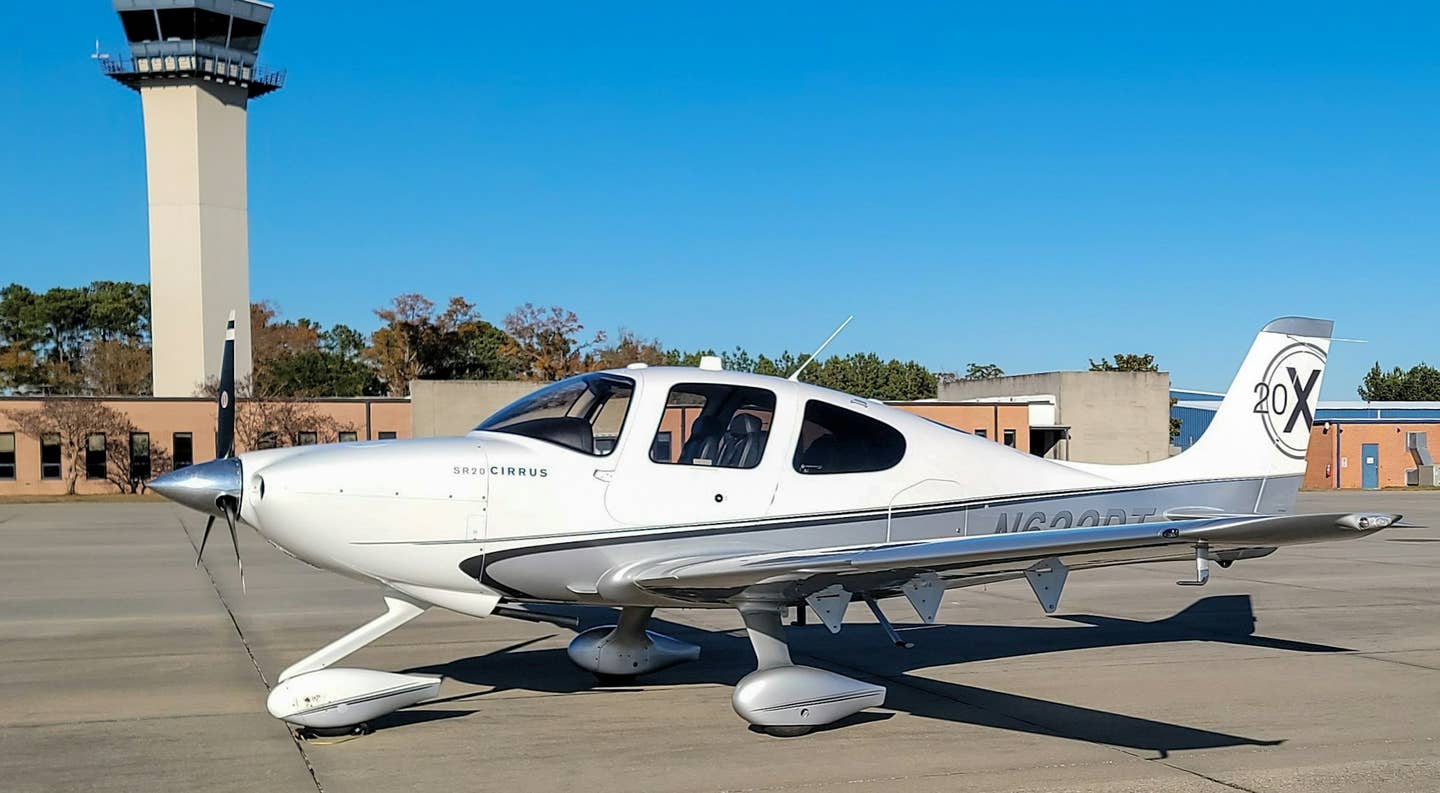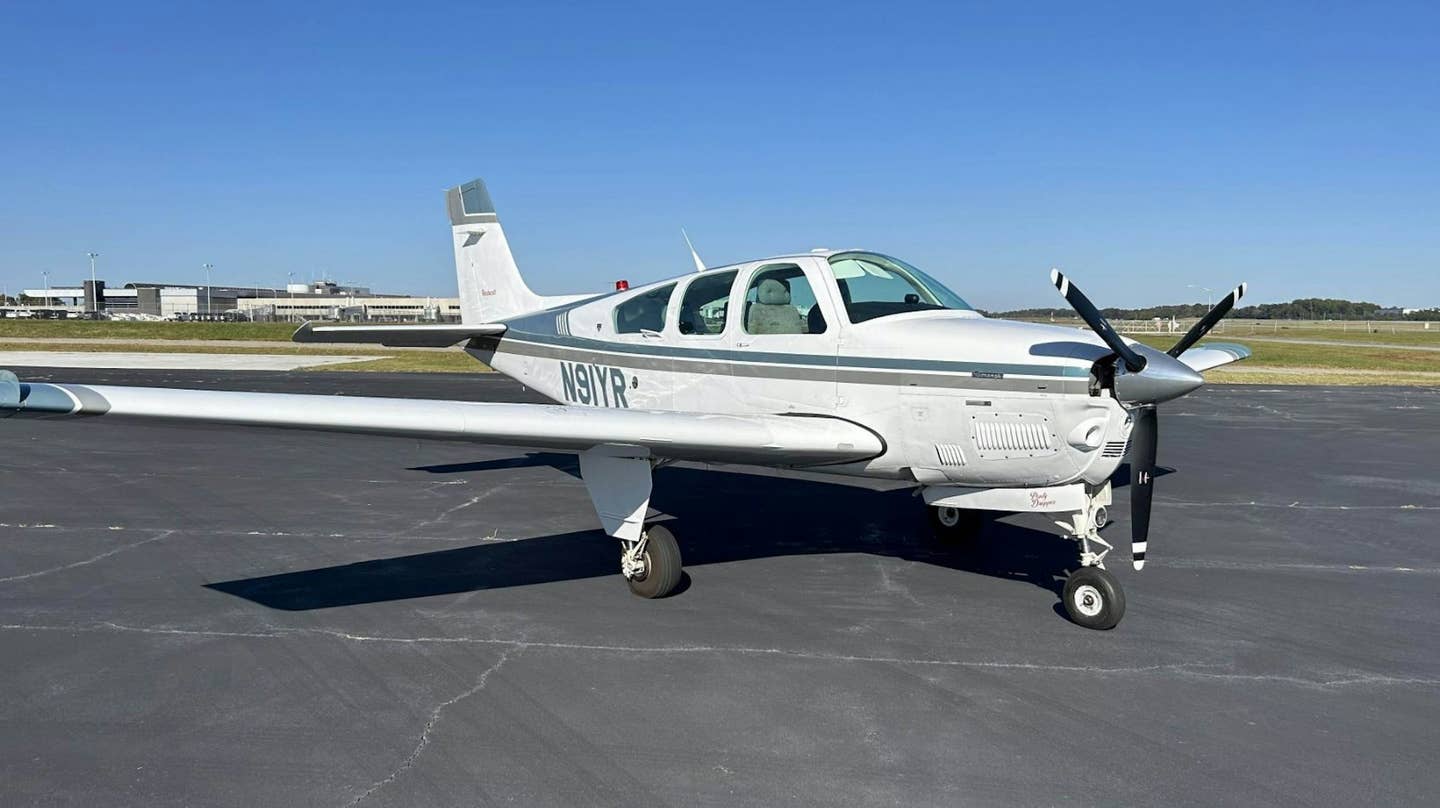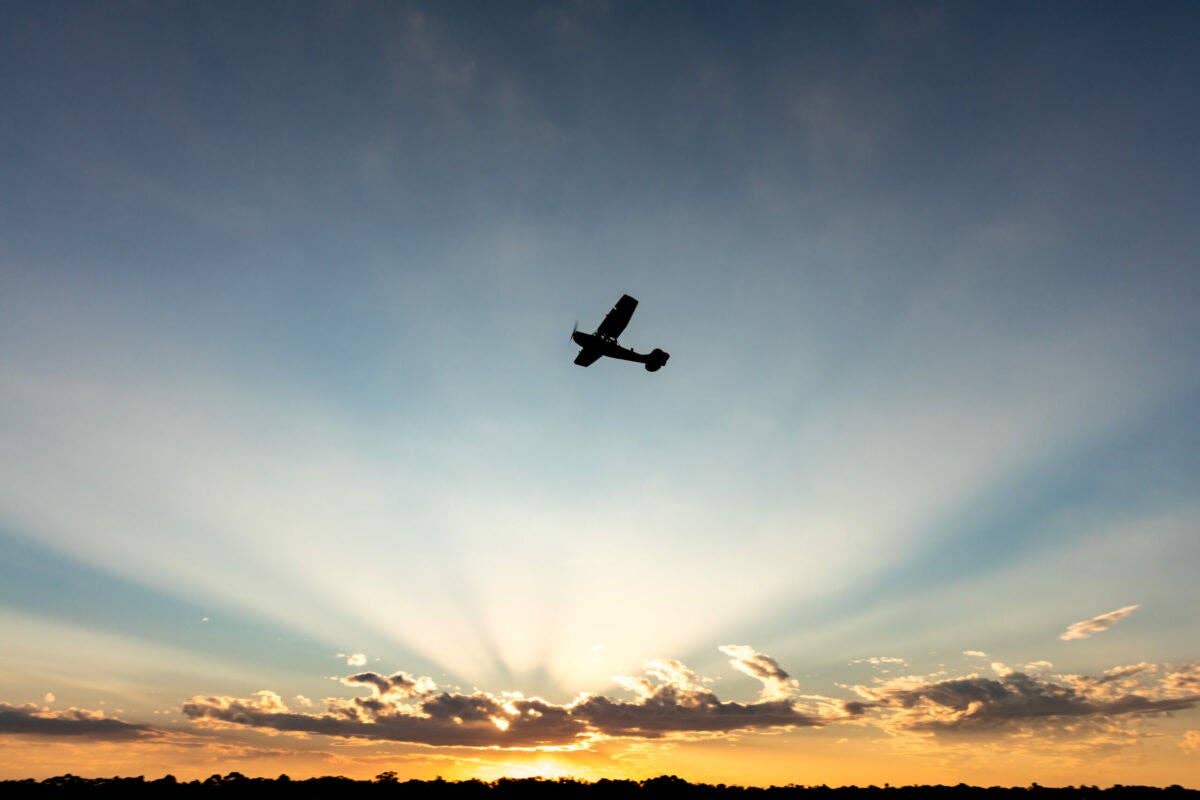
Ikhana NASA
"It's like flying an airplane without four of your five senses," says NASA test pilot Mark Pestana. "You can't smell the fuel, feel the vibration or hear any noises."
Pestana is sitting in the "cockpit" of the unmanned aircraft system (UAS) Ikhana — a civilian version of General Atomics' MQ-9 Reaper, which is a follow-on version of the well-known Predator aircraft. Which is to say, he's sitting in one of two flight stations inside a mobile trailer that's also equipped with monitoring systems and computers for several test engineers, out by the ramp where the Ikhana is sitting in the predawn darkness.
NASA, which helped to fund the development of the Reaper, obtained a civilian version of the UAS aircraft as a research platform in November 2006. (The designation for this class of aircraft used to be RPV, for remotely piloted vehicles, and then UAV, for unmanned aerial vehicles, but it's been changed to UAS to reflect the complex systems nature of most remote aircraft these days.) Ikhana is a Choctaw word meaning "aware," although researchers at NASA's Dryden Flight Research Center at Edwards AFB, which operates the aircraft, joke that it really stands for "I Kan't Handle Another NASA Acronym."
All the pilots who fly the Ikhana are experienced test pilots who've flown everything from B-2 bombers to F-18 fighters. And they all agree with Pestana's assessment that "[the Ikhana] is a lot harder to fly than an F-18. A lot harder."
There are several reasons the Ikhana is so challenging. Starting with the trailer. There are no windows in the trailer, so in order to see the Ikhana as he starts it, Pestana has to rely on an exterior camera trained on the aircraft, as well as crew chief feedback over the radio. But when he starts to taxi, he will lose his external view of it. Unless a chase aircraft is deployed, his eyes will be limited to those of the airplane — which is to say, two cameras (a visual camera for day operations and an infrared camera for night) mounted in Ikhana's nose. The cameras have wide-angle lenses, but they still offer only a limited cone of visibility in front of the aircraft. A 90-degree left glance isn't possible without turning the aircraft to the left.
The cockpit layout and design is also problematic. Pestana is seated at a tall computer console stack, with a keyboard, joystick and throttle quadrant on a data-entry shelf in front of him and two monitors facing him above the keyboard. A video monitor incorporating a Heads-Up Display (HUD) is just above eye level; a second data screen requires him to look down in order to see it. Rudder pedals with toe brakes are mounted underneath the keyboard table.
All the radios are located in a center computer/audio/video stack that looks like something out of a recording studio. But aside from throttle and stick position, most functions normally performed by switching levers or pushing buttons on an instrument panel, from transponder codes to flap deployment, have to be accomplished by finding the right data page (there are 66) and performing the right keystrokes. And nothing about the layout, from what I could tell, was intuitively easy to figure out.
"The hardest part," says test pilot Troy Asher, who was flying the Ikhana for the first time that morning, "is learning the keyboard and menu navigation. When they say 'IFF ident,' good luck. It's like three or four keystrokes to do something like that."
"You get saturated pretty quickly with this system," agrees Hernan Posada, another NASA pilot.
Pestana nods. His conclusion? "I don't think any pilots were there on the days GA designed this setup."
Clearly, the interface between the pilots and the Predator/Ikhana aircraft leaves a lot to be desired. As a comparison, NASA also operates a Global Hawk, and Northrup-Grumman and NASA pilots collaborated on the design of the aircraft flight station. The Global Hawk is a far more expensive and complex UAS than the Predator, so it has the luxury of automatic takeoff and landing systems as well as a preprogrammed flight path, eliminating the need for a hands-on "pilot." But a pilot still monitors the flight and can step in if necessary. The difference between the Global Hawk station — with displays that looked more like a standard glass cockpit with some additional, easily accessed screens of routing and data — and the Ikhana control station were striking.
There are other challenges to flying the Ikhana, as well. The joystick the pilots use has no resistance or feedback, so it's hard to get a "feel" for the airplane. It also has a funky trim system that's completely unlike those in most airplanes. The stick is programmed — god only knows why — for position control, not rate control. So if you push the stick left, the airplane goes into a left bank. But if you then neutralize the stick, which maintains that bank angle in a normal aircraft, the Predator/ Ikhana reads it as a command to return the wings to a neutral position. To keep the airplane in a bank, you have to push the stick left or right, then depress the trim button, keep it depressed while you return the stick to neutral, and then release it.
The trim system on the Ikhana also doesn't have a convenient "level" command button that returns the airplane to center when you want to level the wings. You have to fudge around with stick positions and trim settings to get it out of a set bank, nudging it left and right until it's approximately level again. Which means one of the most important rules when landing a Predator/Ikhana is: Do not trim in a turn. The distraction of trying to level the wings again while doing everything else required for landing is too high.
For takeoff and landing, the Ikhana has a "full control" mode that allows whatever angle of attack and bank you command. In its more automated cruise mode (which a pilot can override), the airplane has much more self-preservation protection, limiting control responses to what it judges it can safely execute … a good thing, considering that the stick offers no feedback and there is a slight delay in commands sent to the aircraft. The delay can be as little as a thousandth of a second, in a direct line-of-sight control link, or as much as a second, if the airplane is operating a long distance from the pilot and commands have to be sent through a satellite relay.
"If you have to land one of these through a satellite link, it's a real challenge," Pestana says, "because you're flaring into the future."
For that reason, Predator/Reapers operating in Iraq and Afghanistan have local crews who perform the takeoffs and landings, even when in-flight control is passed back to a pilot at Nellis or Creech Air Force Base here in the States.
Even without the satellite delay, however, landing a Predator/Reaper/Ikhana is a really tough challenge. Later in the morning, I try my hand at it in an "emulator" NASA has of the airplane. (General Atomics is very clear that it has the only official "simulator.") And while I get a pretty good handle on maintaining speed and altitude around the pattern after a couple of circuits, getting it safely down on the runway is ridiculously hard. The bottom line is that the Predator/Ikhana is a really squirrelly airplane, with really sensitive controls. And landing an aircraft like that without any sensory inputs is an intensely difficult maneuver. I begin to see why so many Predators have crashed on takeoff or landing. A slight overcontrol — easy to do with a slight control delay and no stick feedback — often induces a PIO (pilot-induced oscillation) from which it is very tough to recover. If the airplane begins to porpoise at all, the procedure is to jam the throttle forward and get the hell away from the ground.
Then, even if you manage to flare and land safely, the nosewheel steering is so sensitive that you're likely to find yourself all over the runway, just trying to steer straight. I'm a tailwheel pilot, but the Ikhana was tougher to keep straight than a lot of tailwheels I've flown.
These challenges are also complicated by the fact that you have no peripheral vision, and many of the tasks you need to attend to in the final landing stages require you to look down and perform keystrokes while keeping the airplane on track and under control. One big concern about Predator/Reaper aircraft, for example, is what happens if the communication link between the pilot and the aircraft is lost. (The Global Hawk is pre-programmed, so it just keeps flying its mission.) So the Ikhana is set, if the communication link is lost, to revert to a preprogrammed flight course that ends with it circling over a remote section in Edwards' restricted area. If the problem can't be solved, at least the aircraft can be brought down safely.
But in order for the aircraft to follow a safe, predictable and sensible trajectory to that holding pattern, the initial entry point for the course needs to be manually and constantly updated by the pilot (by accessing the automatic track data page and selecting a new entry waypoint), so the entry point remains just ahead of where the aircraft is. That includes when the airplane is in the landing pattern.
To be fair, part of the reason for all those annoying requirements is that General Atomics was trying to design a highly capable UAS for a limited amount of money. But like Pestana said, it also doesn't appear pilots were in the room when the airplane's flight control/data interfaces, or the procedures for flying and controlling the aircraft, were designed.
So why bother with these vehicles at all? First, it's important to note that not all UAS aircraft are the same. Different designs have different capabilities, as well as different challenges. But they all offer an option for an airborne platform that can go into hazardous regions (combat, fire, cold or extremely high altitude) without risking a human's life. They can also stay airborne for long periods of time, droning back and forth on mind-numbing patrol without any risk of pilot fatigue or distraction. In addition, they can gather data from high or remote areas of the atmosphere more efficiently than if a pilot (and all the weight and systems that it requires) were on board.
That's why agencies such as the U.S. Customs and Border Patrol, the National Forestry Service, the Coast Guard, NOAA and the Department of Defense (DoD), as well as local and state fire officials, are so interested in getting hold of more UAS aircraft and incorporating them into their fleets. Of course, in order for the airplanes to provide any real benefit to most of those agencies, a couple of big challenges have to be solved.
The first is simply a matter of bandwidth: finding enough frequencies to allow control of more aircraft, without interference. In the mid-1990s, a lot of frequencies were released by the government for commercial development, leaving fewer available for aviation purposes. So many of NASA's Ikhana flights, including the one I observed, brief at 4:30 a.m. and take off by 6 a.m. — not because of winds or weather, but simply because the frequencies needed to control the airplane are only available then.
The second thorny challenge is finding a way to safely and efficiently integrate UAS vehicles into the national airspace system. The main issue revolves around how a robotic or remotely piloted aircraft can meet the FAA's requirement to "see and avoid" other aircraft. At the moment, any time a UAS is flown within civil airspace, it has to be accompanied by a piloted chase aircraft, unless a special Certificate of Authorization is filed to waive that requirement. Cleary, UAS aircraft don't provide much advantage if they have to have a piloted chase aircraft with them anyway.
But work is progressing on that front. For the past three years, NASA has used its Ikhana to perform fire-monitoring missions for officials in the Western states. Ikhana has a thermal/infrared sensor it's testing for research purposes that can be integrated with Google Earth maps to show, in data-linked real time, how a fire is moving or developing. That information — sent back from a vehicle that can see through smoke and haze and stay aloft in the thick of those conditions for hours on end — is extremely useful to firefighters on the ground and for civil authorities trying to decide who needs to be evacuated.
Getting permission from the FAA to do those flights, however, was a complex task. The first concern was about the inherent mechanical reliability of the aircraft. The early UAVs, including the early Predators, developed a reputation for mechanical problems — largely because they were designed as somewhat expendable systems, with single-string control and avionics systems. The Reaper and Ikhana, however, have triply redundant flight data and control systems, offering far better reliability. Far better, in fact, than many piloted aircraft have. The Ikhana is also powered by a Honeywell TPE-331 turboprop engine — a far cry from the Rotax 912 engine the original Predators used.
On NASA's fire missions, automatic track programming was used to provide a predictable flight path in case the communication/control links to the aircraft were lost (much the same as an IFR pilot continues a predetermined flight course if communications with controllers are lost). And the NASA pilots had to demonstrate that they could safely land the airplane at any number of designated emergency airports if a mechanical problem arose.
The Ikhana fire missions worked flawlessly. But that was only one aircraft. How might numerous UAS aircraft integrate safely into the civil airspace? Since Ikhana/Predator pilots are looking through the nose of the aircraft, and are talking to controllers at all times, integration with other airplanes might not be a big problem if everyone else out there had a working Mode-S or Mode-C transponder, especially if the airplane's optics and visual field could be improved. The trouble is, not everyone has those transponders, and not everyone wants them. So how does a Predator pilot avoid a Piper Cub — especially around a potentially busy county airport, underneath the radar coverage of ATC?
That problem becomes even more difficult to solve in the case of something like a Global Hawk, which is essentially a robotic drone that attempts to complete its flight mission regardless of what else is out there. A pilot/controller can step in and modify the Global Hawk's flight path, but how does that pilot get the information necessary to know when and how to change the airplane's course?
Previous attempts to solve these issues were abandoned, because the difficulties were just too thorny and numerous. But now, the security needs driving UAS development are causing many potential users — Border Patrol and DoD in particular — to demand the issue be solved, one way or another, and sooner rather than later.
At the moment, the FAA hasn't even issued specifications as to what a UAS aircraft needs in terms of capabilities or equipment in order to operate in the national airspace system. And until those specifications are decided and released, manufacturers can't develop the technology to meet them. In the end, however, there is so much potential for specific uses of UAS aircraft, and therefore pressure from big elephant agencies, that it seems clear that integration will occur. It's a question of when and how that objective is accomplished.
A UAS requirement for some kind of integrated sensor and trajectory algorithm technology is likely to be part of the solution, although better optics and visibility might also be in the mix. If a UAS can reliably sense an impending conflict with another object and turn to avoid it, it will offer at least as much safety as a fallible human. After all, even when traffic close by is called out to us, we don't always see it. And midairs and catastrophic mechanical failures that cause aircraft to plummet from the sky happen in the piloted realm, as well. But it's also entirely possible that the solution will involve other changes, as well — either to the airspace or the equipment requirements for those flying within it.
Those options wouldn't make a lot of pilots happy ... unless the UAS technology that drove those changes then saved their houses from a wildfire, of course. But we survived TCAs and Mode-C transponder requirements, and we'll probably survive UAV integration, as well. Even if we don't ever really want to fly one ourselves.

Sign-up for newsletters & special offers!
Get the latest FLYING stories & special offers delivered directly to your inbox

